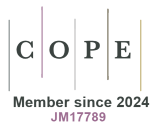The role of patient-reported outcomes in reimbursement decisions and drug innovation in Italy
DOI:
https://doi.org/10.33393/grhta.2023.2514Keywords:
European Public Assessment Reports, Innovativeness, Italian Drug Agency, Patient-reported outcomes, Patient-reported outcome measures, ReimbursementAbstract
The attention paid by regulatory authorities to patient-reported outcomes (PROs) and their related measures (PROMs) has progressively increased to allow for a more complete description of the patient’s health status. This work aimed at investigating the use of PROs/PROMs in relation to reimbursement agreement and innovativeness recognition by the Italian Medicines Agency (AIFA).
The list of European Public Assessment Reports (EPARs), downloaded from the European Medicine Agency (EMA) website, was analyzed to identify drugs authorized between 2017 and 2021. The associations between the use of PROs/PROMs in the EPARs and the reimbursement and innovativeness status in Italy were explored through Chi2 test and logistic regression. In addition, each innovativeness report was analyzed to identify any further evidence about the consideration of PROs/PROM in the decision-making process.
Of the 403 EPARs analyzed, 197 (48.9%) reported the use of PROs/PROMs. A subsample of 229 drugs with a reimbursement class (A, H, or C) officially assigned by AIFA was further investigated. Of them, 49.3% reported the use of PROs/PROMs. The Chi2 test revealed a statistically significant association between the use of PROs/PROMs and innovativeness (p = 0.001) and orphan status (p = 0.012). In the logistic regression, orphan status and availability of PROs/PROMs are significant predictors of the innovativeness status. However, of the 46 innovative drugs, only 9 (19.6%) explicitly reported a consideration of a PRO/PROM in their innovativeness reports. Robust instrument’s validation, reliable data collection and growing potential’s awareness are keys to increase the consideration of PROs at every step of the drug development process.
References
- Brogan AP, DeMuro C, Barrett AM, D’Alessio D, Bal V, Hogue SL. Payer Perspectives on Patient-Reported Outcomes in Health Care Decision Making: oncology Examples. J Manag Care Spec Pharm. 2017;23(2):125-134. https://doi.org/10.18553/jmcp.2017.23.2.125 PMID:28125369 DOI: https://doi.org/10.18553/jmcp.2017.23.2.125
- Brettschneider C, Lühmann D, Raspe H. Informative Value of Patient Reported Outcomes (PRO) in Health Technology Assessment (HTA). https://doi.org/10.3205/hta000092.
- EUnetHTA. Joint Action on HTA 2012-2015, HTA Core Model User Guide. 2016. https://www.eunethta.eu/wp-content/uploads/2018/06/HTACoreModel_UserGuide_Version1.1-1.pdf. Online (Accessed November 2022)
- FDA. Guidance for Industry Patient-Reported Outcome Measures: Use in Medical Product Development to Support Labeling Claims. 2009. https://www.fda.gov/media/77832/download Online (Accessed November 2022)
- EMA. Reflection paper on the regulatory guidance for the use of health-related quality of life (HRQL) measures in the evaluation of medicinal products. 2005. https://www.ema.europa.eu/en/documents/scientific-guideline/reflection-paper-regulatory-guidance-use-healthrelated-quality-life-hrql-measures-evaluation_en.pdf Online (Accessed November 2022)
- EMA. Reflection Paper on the use of patient reported outcome (PRO) measures in oncology studies. 2014. https://www.ema.europa.eu/en/documents/scientific-guideline/draft-reflection-paper-use-patient-reported-outcome-pro-measures-oncology-studies_en.pdf Online (Accessed November 2022)
- Weldring T, Smith SMS. Patient-Reported Outcomes (PROs) and Patient-Reported Outcome Measures (PROMs). Health Serv Insights. 2013;6:61-68. https://doi.org/10.4137/HSI.S11093PMID:25114561 DOI: https://doi.org/10.4137/HSI.S11093
- EMA. Marketing Authorization. https://www.ema.europa.eu/en/human-regulatory/marketing-authorisation Online (Accessed November 2022)
- EMA. European public assessment reports: background and context. https://www.ema.europa.eu/en/medicines/what-we-publish-when/european-public-assessment-reports-background-context Online (Accessed November 2022)
- AIFA. Procedura di autorizzazione centralizzata. https://www.aifa.gov.it/procedura-di-autorizzazione-centralizzata Online (Accessed November 2022)
- Ministero della Salute. Decreto 2 agosto 2019. Criteri e modalità con cui l'Agenzia italiana del farmaco determina, mediante negoziazione, i prezzi dei farmaci rimborsati dal Servizio sanitario nazionale. (20A03810). (GU Serie Generale n.185 del 24-07-2020) https://www.gazzettaufficiale.it/eli/id/2020/07/24/20A03810/sg Online (Accessed November 2022)
- AIFA. Criteri per la valutazione dell’innovatività. Allegato 1. https://www.aifa.gov.it/documents/20142/241044/Allegato_1_1.pdf Online (Accessed November 2022)
- AIFA. Valutazioni economiche. https://www.aifa.gov.it/web/guest/valutazioni-economiche Online (Accessed November 2022)
- AIFA. Linee guida per la compilazione del dossier a supporto della domanda di rimborsabilità e prezzo di un medicinale. 2019. https://www.aifa.gov.it/documents/20142/1283800/Linee_guida_dossier_domanda_rimborsabilita.pdf/8249e3d6-b2fc-915d-a211-02abafb8aa6d Online (Accessed November 2022)
- AIFA. Melazzini M. Esiti riferiti dal paziente: fonte di dati preziosi per la valutazione dei medicinali. 2018. https://www.aifa.gov.it/en/-/esiti-riferiti-dal-paziente-fonte-di-dati-preziosi-per-la-valutazione-dei-medicinali Online (Accessed November 2022)
- EMA. European Public Assessment Reports (EPAR). Table of all EPARs for human and veterinary medicines. https://www.ema.europa.eu/en/medicines/download-medicine-data#european-public-assessment-reports-(epar)-section Online (Accessed November 2022)
- Gnanasakthy A, Barrett A, Evans E, D’Alessio D, Romano CD. A Review of Patient-Reported Outcomes Labeling for Oncology Drugs Approved by the FDA and the EMA (2012-2016). Value Health. 2019;22(2):203-209. https://doi.org/10.1016/j.jval.2018.09.2842 PMID:30711065 DOI: https://doi.org/10.1016/j.jval.2018.09.2842
- AIFA. Elenchi Farmaci di Classe A e H AIFA (15-12-2021). https://www.aifa.gov.it/liste-farmaci-a-h Online (Accessed November 2022)
- AIFA. Elenco Farmaci Innovativi (gennaio 2022). https://www.aifa.gov.it/farmaci-innovativi Online (Accessed November 2022)
- AIFA. Storico Farmaci Innovativi (30-09-2021) https://www.aifa.gov.it/storico-farmaci-innovativi Online (Accessed November 2022)
- AIFA. Valutazione dell’innovatività DUPIXENT (gennaio 2018). https://www.aifa.gov.it/sites/default/files/DUPIXENT.pdf Online (Accessed November 2022)
- AIFA. Valutazione dell’innovatività ALUNBRIG (luglio 2020). https://www.aifa.gov.it/documents/20142/1308577/96_Alunbrig_15255_scheda_innovativita_GRADE.pdf Online (Accessed November 2022)
- AIFA. Valutazione dell’innovatività HEMLIBRA (giugno 2018). https://www.aifa.gov.it/sites/default/files/HEMLIBRA_v1.0.pdf Online (Accessed November 2022)
- AIFA. Valutazione dell’innovatività ZEJULA (gennaio 2018). https://www.aifa.gov.it/sites/default/files/ZEJULA_12934_v1.0.pdf Online (Accessed November 2022)
- AIFA. Valutazione dell’innovatività Poteligeo (aprile 2020). https://www.aifa.gov.it/documents/20142/1308577/98_Poteligeo_14935_scheda_innovativita_GRADE.pdf Online (Accessed November 2022)
- AIFA. Valutazione dell’innovatività KAFTRIO (gennaio 2021) https://www.aifa.gov.it/documents/20142/1540069/126_KAFTRIO_KALYDECO_genotipo_F_F_scheda_innovativita_GRADE.pdf Online (Accessed November 2022)
- AIFA. Valutazione dell’innovatività ONPATTRO (novembre 2018) https://www.aifa.gov.it/documents/20142/1184740/ONPATTRO_13833_INNOV._v.1.0.pdf Online (Accessed November 2022)
- AIFA. Valutazione dell’innovatività Waylivra (settembre 2020) https://www.aifa.gov.it/documents/20142/1504529/112_Waylivra_scheda_innovatività_GRADE.pdf Online (Accessed November 2022)
- AIFA. Valutazione dell’innovatività Braftovi (maggio 2021) https://www.aifa.gov.it/documents/20142/1690663/5_Braftovi_scheda_innovativita-GRADE.pdf Online (Accessed November 2022)
- EMA. Regulatory Science to 2025. https://www.ema.europa.eu/en/about-us/how-we-work/regulatory-science-strategy#regulatory-science-strategy-to-2025-section Online (Accessed November 2022)










